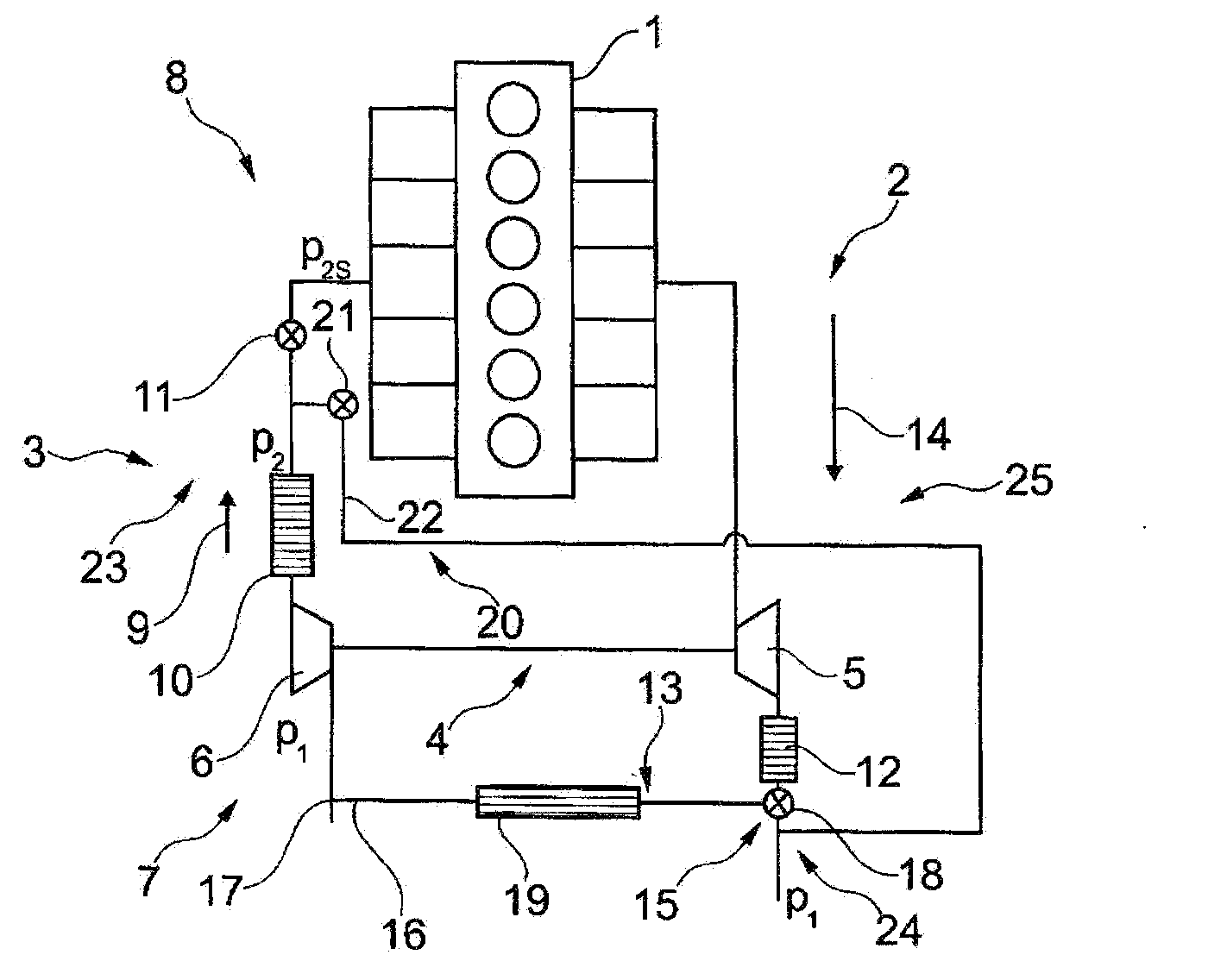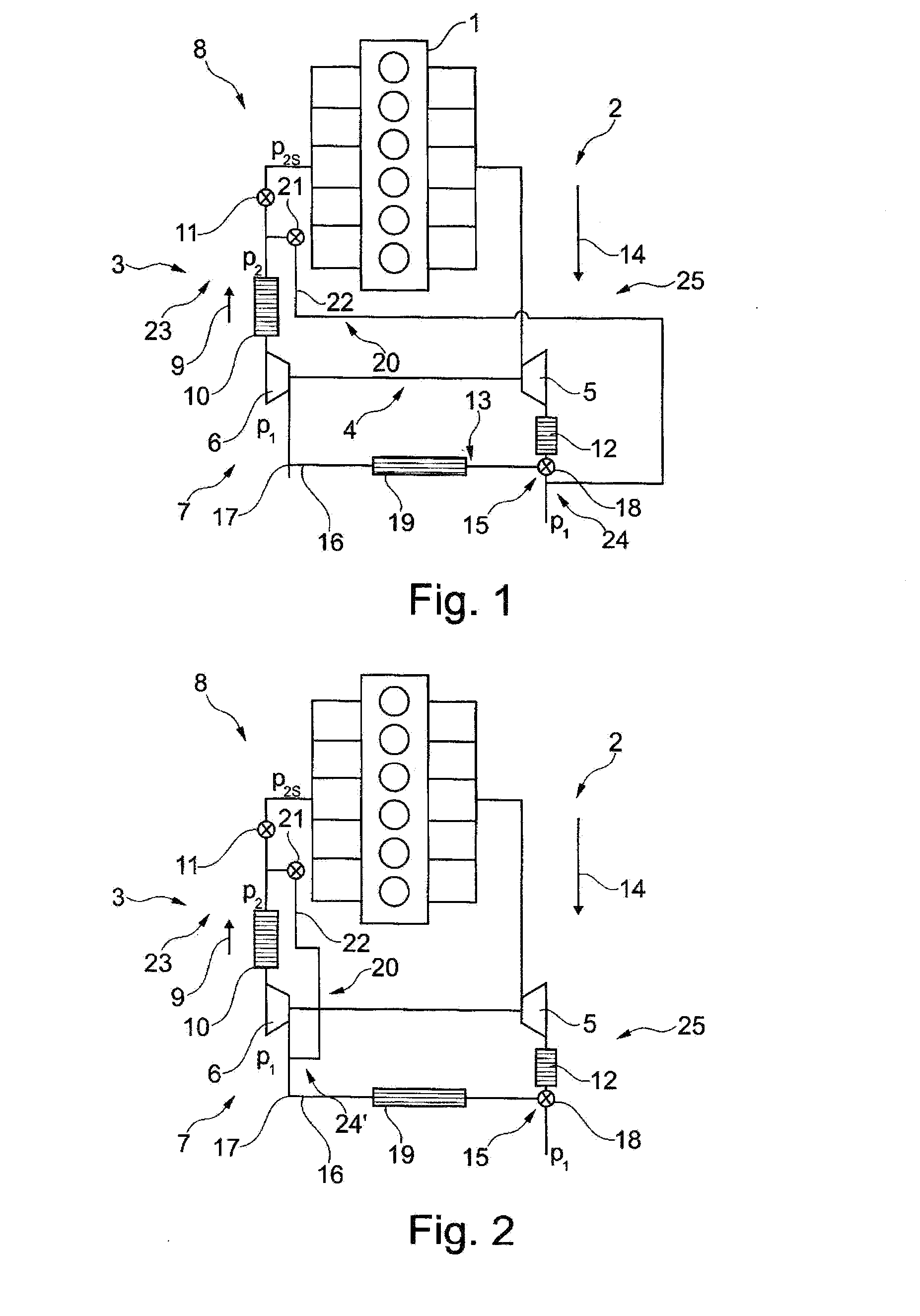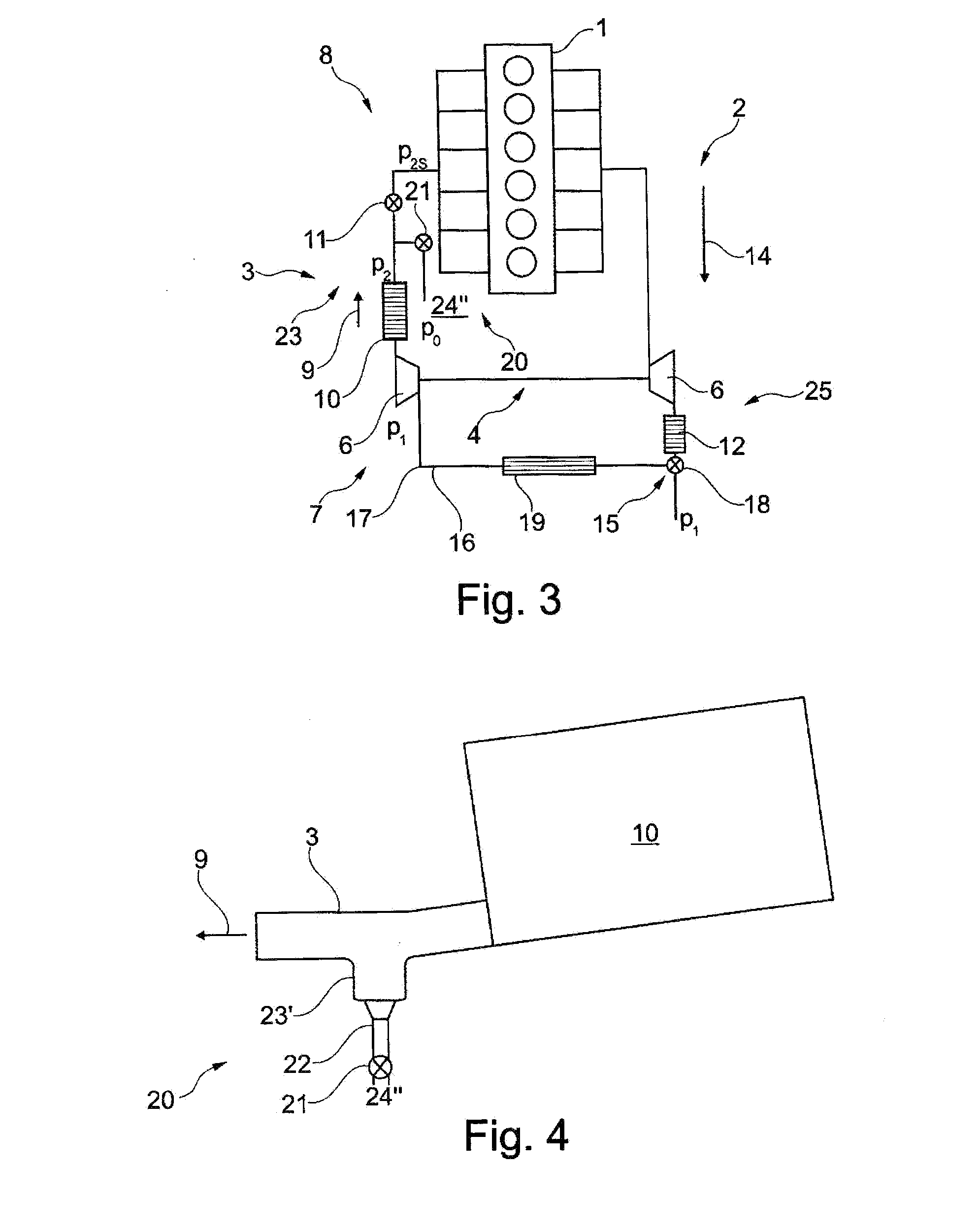Exhaust gas recirculation arrangement with condensate discharge
a condensate discharge and exhaust gas technology, applied in the direction of combustion engines, non-fuel substance addition to fuel, charge feed systems, etc., can solve the problems of sulphuric acid or sulphurous acid, and the condensate cannot be re-evaporated at very high temperatures
- Summary
- Abstract
- Description
- Claims
- Application Information
AI Technical Summary
Benefits of technology
Problems solved by technology
Method used
Image
Examples
Embodiment Construction
[0029]An internal combustion engine 1 as shown in FIG. 1 is equipped with an exhaust gas path 2 and a fresh air supply system 3, as well as a charging device 4. A turbine 5 of the charging device 4 is driven by means of the exhaust gas flowing in the exhaust gas path 2. The fluids flowing in the fresh air path 3 are compressed by means of a compressor 6 of the charging device 4. Thus, the fresh air path 3 is divided into a low-pressure region 7 and a high-pressure region 8. The low-pressure region 7 is arranged before the compressor 6 in the fresh air flow direction 9 and the high-pressure region 8 is arranged after the compressor 6. Likewise, a heat exchanger 10 in the form of a charge air cooler is arranged in the fresh air path 3 downstream of the compressor 6 and a restrictor element 11, with which the fresh air supply to the internal combustion engine 1 can be limited, is arranged downstream of the heat exchanger 10 which is in the form of a charge air cooler. A pressure p1 is ...
PUM
 Login to View More
Login to View More Abstract
Description
Claims
Application Information
 Login to View More
Login to View More - R&D
- Intellectual Property
- Life Sciences
- Materials
- Tech Scout
- Unparalleled Data Quality
- Higher Quality Content
- 60% Fewer Hallucinations
Browse by: Latest US Patents, China's latest patents, Technical Efficacy Thesaurus, Application Domain, Technology Topic, Popular Technical Reports.
© 2025 PatSnap. All rights reserved.Legal|Privacy policy|Modern Slavery Act Transparency Statement|Sitemap|About US| Contact US: help@patsnap.com



